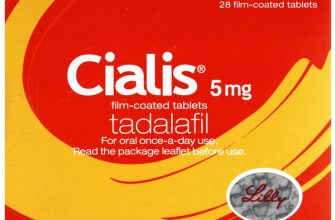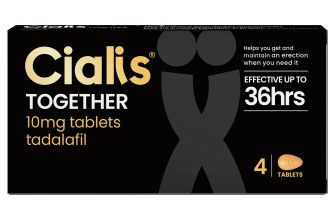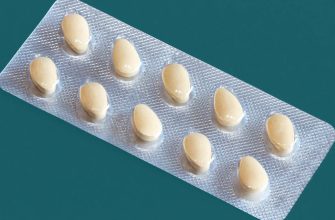Need to calculate the right amoxicillin dose for your child? Use our convenient calculator (link to calculator here). It considers weight and age for accurate dosing, ensuring safety and efficacy. Input your child’s weight in kilograms and their age, and receive a recommended dosage in milligrams per kilogram per day.
Always consult your pediatrician before administering any medication. This calculator provides a suggestion; professional medical advice is paramount for accurate dosage and potential drug interactions. Remember to carefully follow the instructions provided with the medication, including frequency and administration method. Note the calculator’s results are based on standard guidelines, but individual needs might vary.
Important: This tool is for informational purposes only and doesn’t replace a doctor’s visit. Monitor your child for any adverse reactions and contact your doctor immediately if you observe any allergic responses, such as hives, swelling, or difficulty breathing. Keep amoxicillin out of reach of children. Proper storage is crucial to maintain its effectiveness.
- Amoxicillin Pediatric Dose Calculator: A Comprehensive Guide
- Understanding Dosage Calculations
- Example Calculation
- Important Considerations
- Understanding Amoxicillin and its Use in Children
- Factors Affecting Amoxicillin Dosage in Children: Weight, Age, and Infection Severity
- Age Considerations
- Infection Severity
- How to Use an Amoxicillin Pediatric Dose Calculator: A Step-by-Step Guide
- Interpreting the Results of an Amoxicillin Pediatric Dose Calculator
- Commonly Used Amoxicillin Pediatric Dose Calculators: Online and App-Based Options
- Online Calculators
- App-Based Calculators
- Important Note
- Safety Precautions and Potential Side Effects of Amoxicillin in Children
- When to Consult a Doctor: Recognizing the Need for Professional Medical Advice
- Symptoms Requiring Immediate Attention
- When to Follow Up
- Alternative Antibiotics for Children: When Amoxicillin May Not Be Appropriate
- Penicillin Allergy
- Ineffective Treatment
- Specific Infections
- Common Alternatives and Their Uses
- Next Steps
- Important Note:
Amoxicillin Pediatric Dose Calculator: A Comprehensive Guide
Always consult your pediatrician before administering any medication to your child. Amoxicillin dosage depends heavily on the child’s weight and the specific infection being treated. Never guess; use a reliable calculator and follow your doctor’s instructions.
Understanding Dosage Calculations
Most pediatric amoxicillin calculators utilize the child’s weight in kilograms (kg) and the recommended dosage in milligrams per kilogram (mg/kg) per day. This is then divided into the number of doses per day, typically twice daily (BID) or three times daily (TID).
- Weight Conversion: If your child’s weight is in pounds (lbs), convert it to kilograms using this formula: kg = lbs / 2.205.
- Standard Dosage Range: The typical amoxicillin dosage for children is 20-40 mg/kg/day. Your doctor will specify the correct dosage based on your child’s individual needs.
- Calculating Daily Dose: Multiply your child’s weight in kg by the prescribed mg/kg/day dosage. This gives you the total milligrams your child needs per day.
- Determining Dose per Administration: Divide the daily dose by the number of doses per day (usually 2 or 3). This is the amount of amoxicillin to give your child at each dose.
Example Calculation
- Child’s weight: 22 lbs
- Weight conversion: 22 lbs / 2.205 = 10 kg
- Prescribed dosage: 30 mg/kg/day
- Daily dose: 10 kg * 30 mg/kg/day = 300 mg/day
- Dosage per administration (BID): 300 mg/day / 2 doses/day = 150 mg per dose
Important Considerations
- Suspension vs. Tablets: Amoxicillin comes in various forms. Follow instructions for measuring liquid suspensions precisely; use the provided measuring device.
- Missed Doses: If you miss a dose, administer it as soon as you remember, unless it’s nearly time for the next dose. Never double the dose.
- Allergies: Amoxicillin is a penicillin antibiotic. Be aware of any penicillin allergies before administering.
- Side Effects: Monitor your child for side effects like diarrhea, rash, or vomiting. Contact your pediatrician immediately if you observe any concerning symptoms.
Remember, this guide provides general information. Always consult a medical professional for personalized advice and accurate dosage calculations for your child.
Understanding Amoxicillin and its Use in Children
Amoxicillin is a common antibiotic, effective against many bacterial infections. It’s frequently prescribed for children with ear infections, strep throat, pneumonia, and bronchitis. Always follow your doctor’s instructions precisely; never adjust the dosage yourself.
The correct dose depends on your child’s weight and the specific infection. A pediatric amoxicillin dose calculator helps determine the appropriate amount. Dosage is usually measured in milligrams per kilogram of body weight (mg/kg).
Amoxicillin comes in various forms: liquid suspensions (easier for young children), chewable tablets, and capsules (for older children). The liquid form often needs shaking before each dose to ensure even distribution of the medication.
Complete the prescribed course of treatment, even if your child feels better. Stopping early may lead to the infection returning and becoming resistant to the antibiotic. Monitor your child for any allergic reactions such as rash, hives, or swelling. If any occur, stop administering amoxicillin and contact your doctor immediately.
Side effects can include diarrhea, vomiting, or stomach upset. These are usually mild and resolve on their own. However, persistent or severe side effects require medical attention. Store amoxicillin as directed on the label, usually in a cool, dry place.
Remember, this information is for educational purposes only and does not replace professional medical advice. Always consult a pediatrician before giving your child any medication.
Factors Affecting Amoxicillin Dosage in Children: Weight, Age, and Infection Severity
Accurate amoxicillin dosing hinges on three key factors: the child’s weight, age, and the severity of the infection. Doctors typically use the child’s weight in kilograms to calculate the appropriate dose, often expressed as milligrams per kilogram (mg/kg) per day. A common range is 20-40 mg/kg/day, administered in divided doses every 8-12 hours. However, this is just a guideline; the precise dose depends on individual circumstances. Very young children, usually under 3 months old, often require a slightly lower dose due to their immature kidneys and livers. Conversely, children with severe infections may need higher doses than the standard range. Always follow your doctor’s specific instructions.
Age Considerations
Age influences dosage primarily because of organ maturation. Infants under 3 months may have reduced metabolic capacity, affecting how quickly their bodies process amoxicillin. Consequently, higher doses might lead to accumulation and potential side effects. Older children generally metabolize drugs more effectively and tolerate higher doses. This factor is generally integrated into the weight-based calculation, with the age primarily informing caution in younger patients.
Infection Severity
The severity of the infection significantly impacts amoxicillin dosage. A mild ear infection might be treated effectively with a lower dose than a severe pneumonia. The doctor will consider the type of infection, its progression, and the child’s overall health when determining the appropriate dosage. More serious infections warrant closer monitoring and potentially higher doses, which are always carefully adjusted and evaluated by a medical professional.
How to Use an Amoxicillin Pediatric Dose Calculator: A Step-by-Step Guide
First, find a reputable online calculator or use a calculator provided by your doctor or pharmacist. Ensure the calculator is designed specifically for amoxicillin dosing in children.
Next, accurately enter the child’s weight in kilograms. Use a digital scale for the most precise measurement. Many calculators also accept pounds; choose the appropriate option and input the weight correctly.
Then, input the prescribed amoxicillin dosage. This information should be on the prescription. The dosage is usually expressed as milligrams per kilogram (mg/kg) per day, or as a total daily dose in milligrams.
After that, specify the dosing frequency. This is usually two or three times daily. The calculator will use this to determine the amount per single dose.
The calculator will then provide the recommended dose per administration in milligrams or milliliters, depending on the amoxicillin formulation. Check this carefully. Double-check all inputted data before accepting the result.
Finally, always confirm the calculated dose with your doctor or pharmacist before administering the medication to your child. They can help address any concerns and ensure the correct dosage is given.
Interpreting the Results of an Amoxicillin Pediatric Dose Calculator
The calculator provides the total daily dose and the frequency of administration. For example, a result might show “1000mg daily, divided into two doses”. This means your child needs a total of 1000mg of amoxicillin each day, given in two separate 500mg doses, typically 12 hours apart.
Always check the available amoxicillin suspension concentrations. Common concentrations are 125mg/5ml and 250mg/5ml. A 500mg dose from a 250mg/5ml suspension requires 10ml.
The calculator often suggests a specific duration of treatment. Complete the entire course, even if your child feels better sooner. Stopping early can lead to treatment failure and antibiotic resistance.
Pay close attention to the specific instructions for your child’s age and weight. The calculator accounts for these factors to ensure a safe and effective dose.
If you have any doubts or questions about the results, always contact your doctor or pharmacist. They can verify the calculation and provide additional advice on administration and potential side effects.
Use a measuring device, such as an oral syringe, to accurately measure the liquid medication. Avoid using household spoons, as they are not precise enough.
Monitor your child for any allergic reactions such as rash, swelling, or difficulty breathing. Seek immediate medical attention if these occur. Keep a close watch for gastrointestinal side effects, such as diarrhea or vomiting.
Store the amoxicillin suspension as directed on the label, typically refrigerated. Discard any unused medication after the expiration date.
Commonly Used Amoxicillin Pediatric Dose Calculators: Online and App-Based Options
Finding the right amoxicillin dose for your child can be tricky, but several reliable resources simplify the process. We recommend verifying any calculation with your pediatrician or pharmacist before administering medication.
Online Calculators
- MedCalc: Offers a user-friendly interface with clear instructions and a focus on accurate dosage calculations. It accounts for various factors such as weight and age.
- Drugs.com: Provides a dosage calculator alongside detailed drug information. This resource offers valuable context, although always confirm with your healthcare provider.
- Your pediatrician’s website: Many pediatricians provide online resources including dosage calculators tailored to their practice. Check your pediatrician’s website for this helpful tool.
Remember: Online calculators are tools; they don’t replace professional medical advice. Always check with your doctor or pharmacist.
App-Based Calculators
- Epocrates: A widely used medical app by professionals, Epocrates often includes pediatric dosage calculators, ensuring accuracy and reliability. Requires a subscription.
- LexiComp: Similar to Epocrates, LexiComp offers extensive drug information and dosage calculators, typically available through a subscription.
- Check your pediatrician’s recommended apps: Many pediatricians recommend specific apps for managing medication, which may include integrated dosage calculators. Ask your pediatrician for recommendations tailored to your needs.
Important Note
App-based calculators should be downloaded from reputable sources like the App Store or Google Play to minimize the risk of malware or inaccurate information. Always review the app’s rating and user comments before downloading.
Safety Precautions and Potential Side Effects of Amoxicillin in Children
Always follow your doctor’s instructions precisely regarding dosage and administration. Never exceed the prescribed amount.
Monitor your child for allergic reactions. These can range from mild rashes to severe anaphylaxis. Signs include hives, swelling, difficulty breathing, or dizziness. Seek immediate medical attention if any occur.
Amoxicillin can cause diarrhea. In rare cases, this can be severe and indicate Clostridium difficile infection. Contact your pediatrician if your child experiences persistent or bloody diarrhea.
Some children experience nausea or vomiting. Administering the medication with food might help alleviate these symptoms. Consider smaller, more frequent doses instead of one large dose.
Amoxicillin can affect the balance of bacteria in the gut. This may lead to yeast infections (thrush) in the mouth or vagina. Watch for white patches in the mouth or unusual vaginal discharge.
While rare, amoxicillin can impact liver function. This is more likely with high doses or pre-existing liver conditions. Your doctor will monitor for any signs of liver problems.
Tell your doctor about all medications your child takes, including over-the-counter drugs and supplements. Certain medications may interact with amoxicillin.
Keep amoxicillin out of reach of children. Accidental ingestion can be dangerous. Proper storage is crucial to ensure medication efficacy.
Finally, if you have any concerns about your child’s health while they are taking amoxicillin, contact your pediatrician immediately.
When to Consult a Doctor: Recognizing the Need for Professional Medical Advice
Seek immediate medical attention if your child experiences a severe allergic reaction, indicated by difficulty breathing, swelling of the face or throat, or hives. Call your doctor immediately.
Contact your pediatrician if your child’s symptoms worsen or don’t improve after 48-72 hours of amoxicillin treatment. This includes persistent fever, continued earache, or worsening cough. Don’t delay; early intervention is key.
Symptoms Requiring Immediate Attention
These symptoms demand immediate medical evaluation: difficulty breathing; severe rash; significant swelling; seizures; or changes in behavior or alertness. Do not wait to seek help; act quickly.
When to Follow Up
Schedule a follow-up appointment with your doctor after completing the amoxicillin course to ensure the infection has resolved. This allows for proper assessment and prevents potential complications. Your doctor will advise on the best timing for this appointment.
Remember, this information is for guidance only and does not replace professional medical advice. Always consult your pediatrician for personalized recommendations concerning your child’s health.
Alternative Antibiotics for Children: When Amoxicillin May Not Be Appropriate
Amoxicillin is a common choice, but it’s not always the best option. Consider alternatives if your child has a penicillin allergy, or if amoxicillin hasn’t worked previously.
Penicillin Allergy
A penicillin allergy requires a different antibiotic entirely. Common alternatives include azithromycin (Zithromax), clarithromycin (Biaxin), or cephalexin (Keflex). Always inform your doctor about any allergies before starting any medication.
Ineffective Treatment
If amoxicillin hasn’t helped your child’s infection, the bacteria may be resistant. Your doctor might prescribe a different antibiotic based on the type of infection and the likely bacteria involved. Testing may be necessary to determine the correct antibiotic.
Specific Infections
Certain infections respond better to specific antibiotics. For example, some ear infections might require a different antibiotic than others. Your doctor will consider the specifics of your child’s infection when making their prescription.
Common Alternatives and Their Uses
| Antibiotic | Common Uses | Considerations |
|---|---|---|
| Azithromycin | Ear infections, pneumonia, bronchitis | May cause stomach upset |
| Cefdinir | Ear infections, tonsillitis, sinusitis | Can cause diarrhea |
| Cephalexin | Skin infections, ear infections, urinary tract infections | May cause allergic reactions in people allergic to penicillin (though less frequently than Amoxicillin) |
Next Steps
Always consult your pediatrician or another qualified healthcare professional to determine the most appropriate antibiotic for your child’s specific needs. They will consider your child’s medical history, the nature of the infection, and other factors to select the safest and most effective treatment.
Important Note:
Never administer antibiotics without a doctor’s prescription. Incorrect antibiotic use can lead to antibiotic resistance, making future infections harder to treat.







